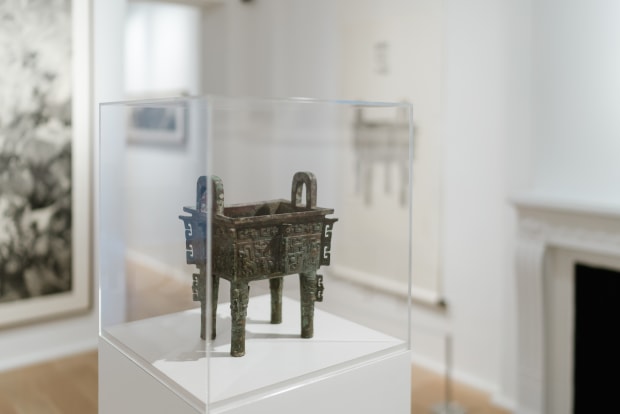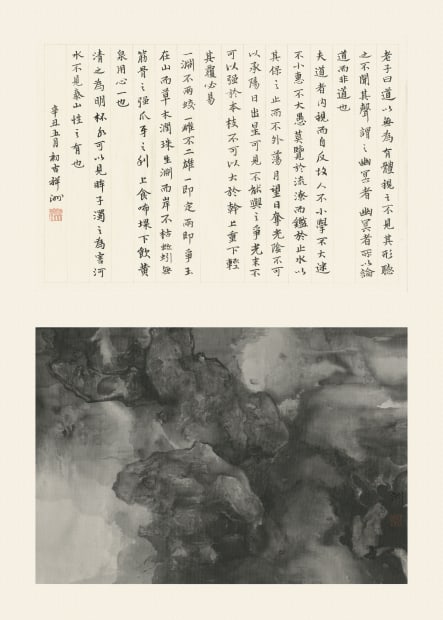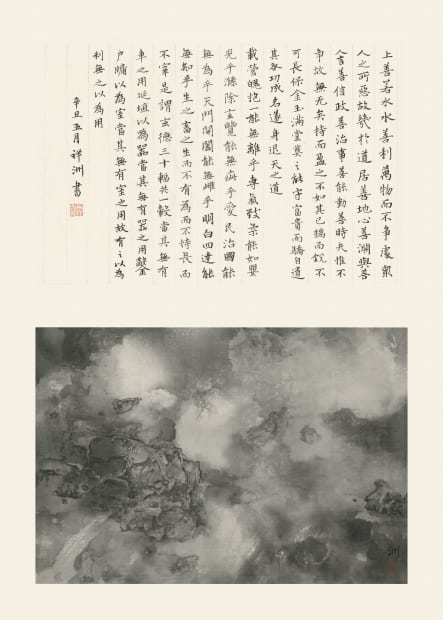Tai’s deep knowledge of silk stems from his five years of training as a conservator for Chinese paintings at Palace Museum Beijing. This experience made Tai more sensitive to the relationship between ink, the brush, and silk surfaces. Tai generally begins by painting directly onto the raw silk. The ink permeates the ground with the first brushstroke, revealing the process of vaporization. He brushes the glue and alum several times to process the silk gradually, creating a surface capable of hosting the hard, sharp outlines of details; If the effect is not enough, he washes off the glue and alum, turning sections of the processed silk back to its raw condition. Every state of the process is manipulated or reversed and re-manipulated until the desired result is achieved. The silk’s steady transformation complements his laminar brushwork, paralleling its depth and intensifying the sense of momentum and fluctuating energy.
“Endless Celestial Motions” is a dynamic composition that captures indeterminate forms of cosmic matter, mid-transformation. The mercurial shapes seem to waver between solid, liquid, gas, and plasma states, materializing and receding in an exquisite rhythm of ink brushwork, light, and transparency. Referencing terrestrial and extraterrestrial landscapes, these works – intense and exuding energy – evoke fantastic cosmographies that fuse the majestic and the monumental.





















